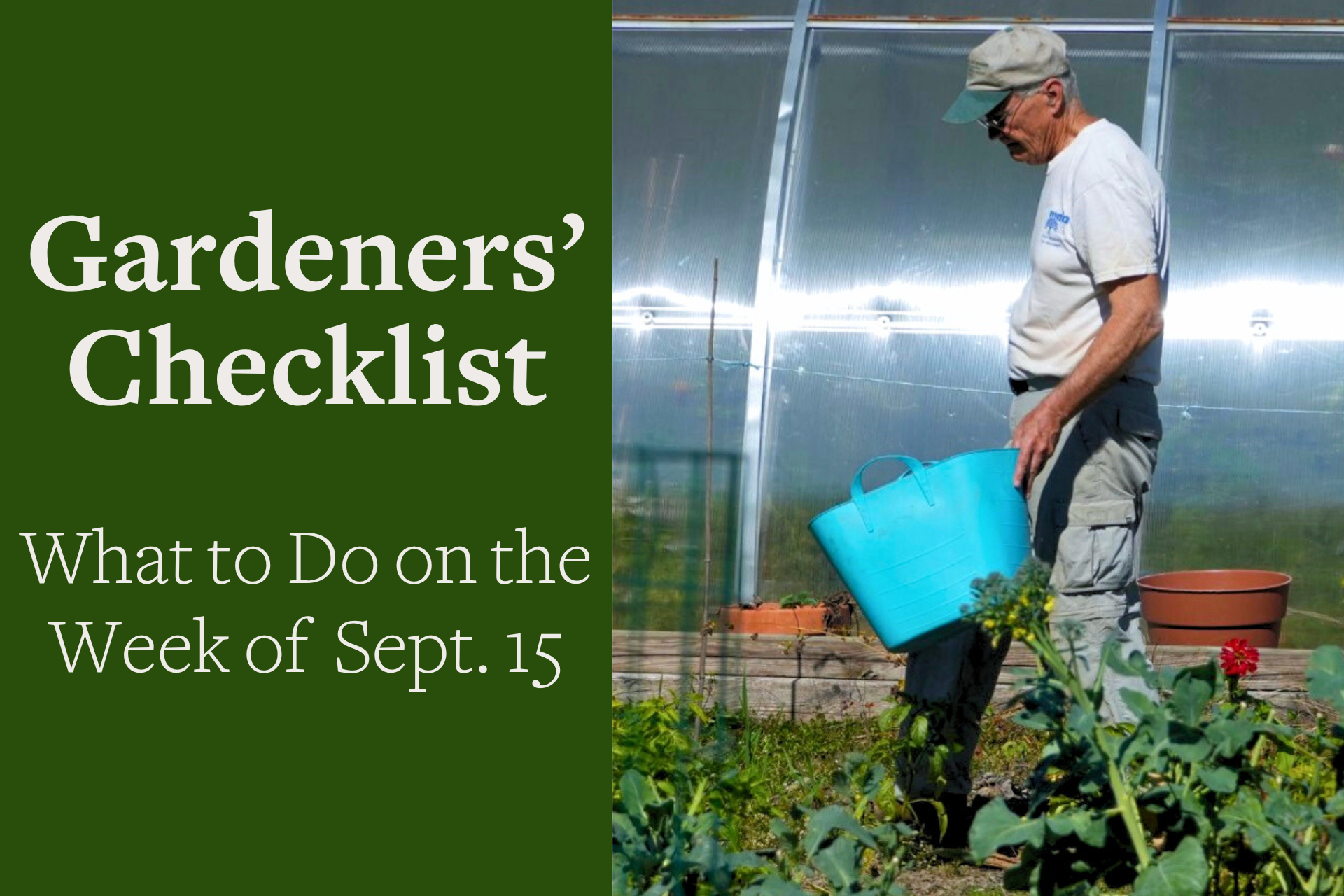You are here
Gardeners Checklist: Here Is What to Do the Week of Sept. 15
Gardeners Checklist: Here Is What to Do the Week of Sept. 15
By Ron Kujawski
* Buy daffodils if you’re undecided about what spring-flowering bulbs to plant. Yes, they are so common, but they are also sturdy, reliable, resilient, and deer, rabbits, and mice will not eat them. This is one case where familiarity does not breed contempt.
* Plant radishes, spinach, mache, arugula, mustard greens, and spinach. There’s still time to get a good harvest from these cool-season vegetables.
* Wash gourds in warm, soapy water and then rinse with clear water. Cure the cleaned gourds by spreading them on several layers of newspaper in a warm, airy spot for several weeks. Turn the gourds every few days for uniform curing. Pumpkins and winter squash can be treated in the same way.
* Cover the heads of sunflowers with cheesecloth if you don’t want to share the seeds with feathered friends, or with birds for that matter. Sunflowers are mature when the heads are completely brown with no trace of green. The heads can also be cut off, leaving a foot of stem attached, before fully mature. Hang them in a dry, well-ventilated area to finish ripening. Sunflower seeds make for a very healthy snack; just ask your feathered friends or the birds.
* Mix fresh grass clippings, animal manure, or a high-nitrogen fertilizer such as cottonseed meal or blood meal into your compost pile to speed decomposition. Keep the pile moist and turn it every 7 to 10 days. By late October, you should have some usable compost to spread over the soil in flower and shrub borders.
*
Okay, you’ve successfully brought your potted amaryllis through the summer with some fine-looking leaves. Now what? If the plant spent the summer outdoors, bring it in; however, there is no rush. Unlike houseplants, which should have been brought indoors several weeks ago, amaryllis can remain outdoors until October, as long as it is not exposed to frost. Once you’ve brought amaryllis indoors, you have several options for what to do next. The first option is to simply stop watering the plant. When the leaves have dried and turned brown, cut them off. The second option is to lift the bulb from its pot and lay it on a bench to dry. As with option one, cut off the leaves when they’ve dried. Repot the bulb at any time. In both cases, leave the bulbs in a dry state — potted or unpotted — until you want to force new growth and flowering. At that point, place the potted bulb in a warm, sunny spot and begin regular watering. It’ll take about eight weeks for flowers to appear. The third option is to let the plant continue to grow, giving it plenty of bright light. Water it as you would any houseplant, but don’t feed it. At some point, the leaves will yellow and drop. Don’t fret; it’s a normal response. Just keep watering, and soon new leaves and a flower stalk will appear. With either of the first two options, you can decide when to force the plant to bloom. With option three, the plant will decide.
Ron Kujawski began gardening at an early age on his family's onion farm in upstate New York. Although now retired, he spent most of his career teaching at the UMass Extension Service. He serves on Berkshire Botanical Garden’s Horticulture Advisory Committee. His book, Week-by-Week Vegetable Gardener’s Handbook, is available here.
Help Our Garden Grow!
Your donation helps us to educate and inspire visitors of all ages on the art and science of gardening and the preservation of our environment.
All donations are 100 percent tax deductible.


